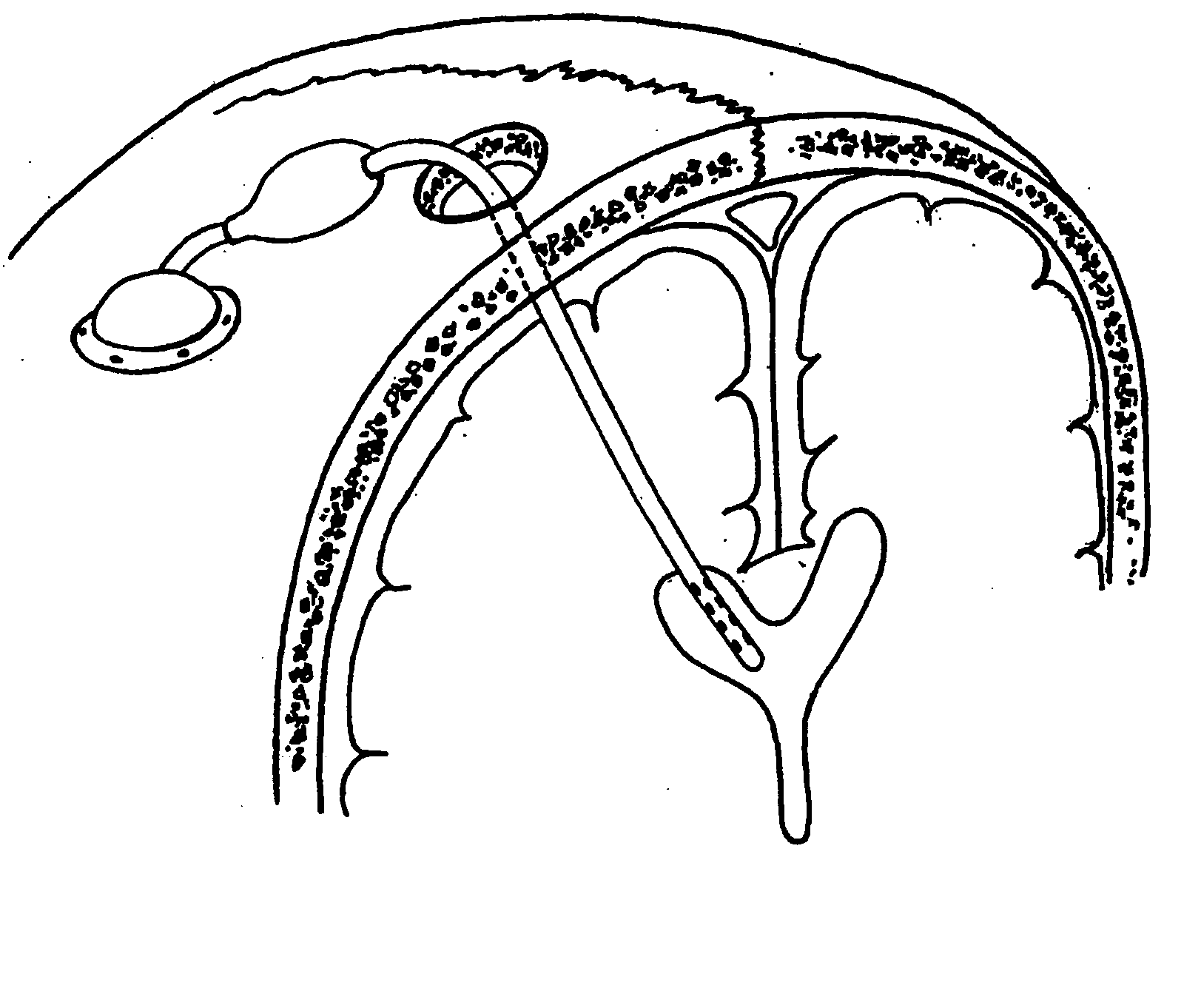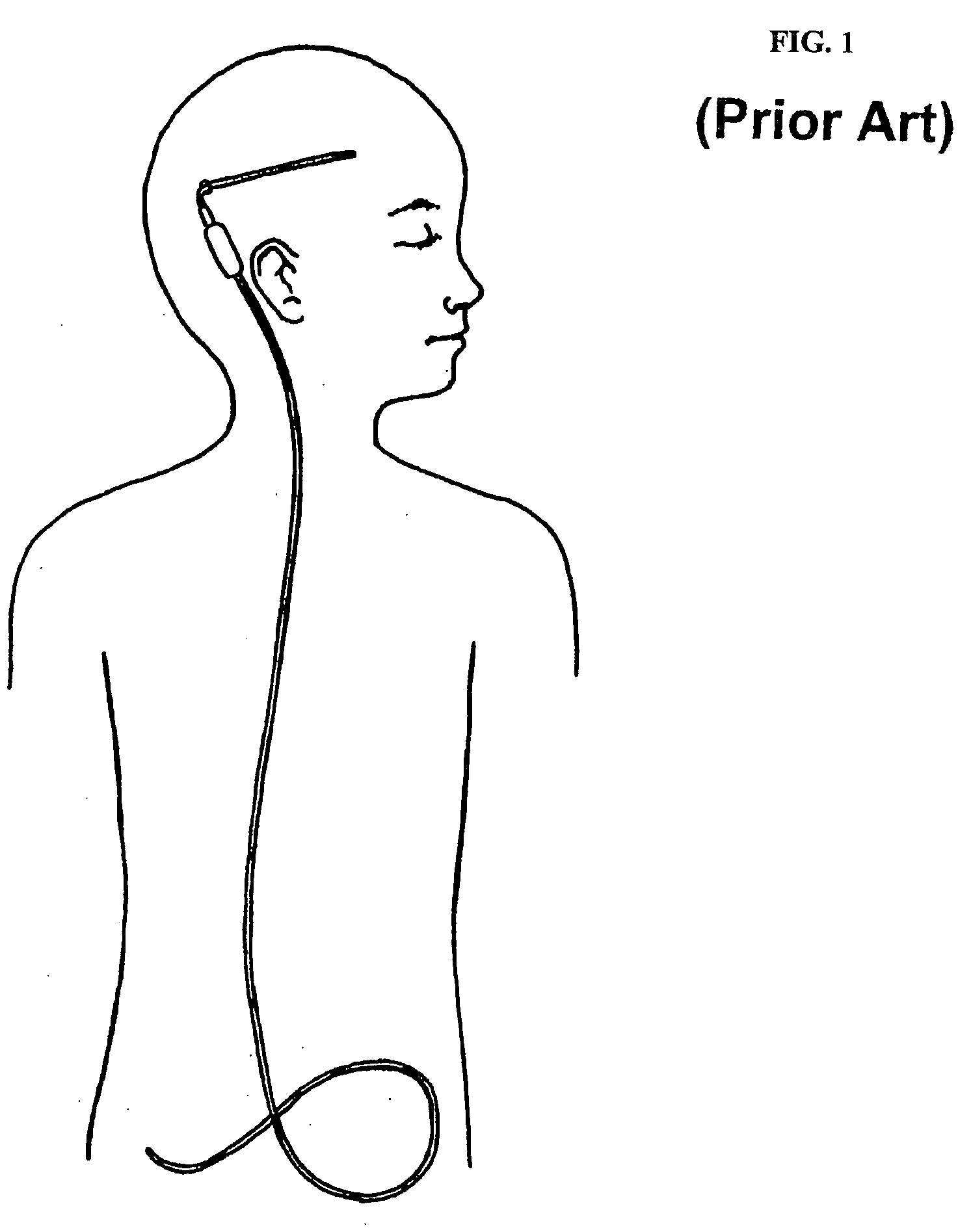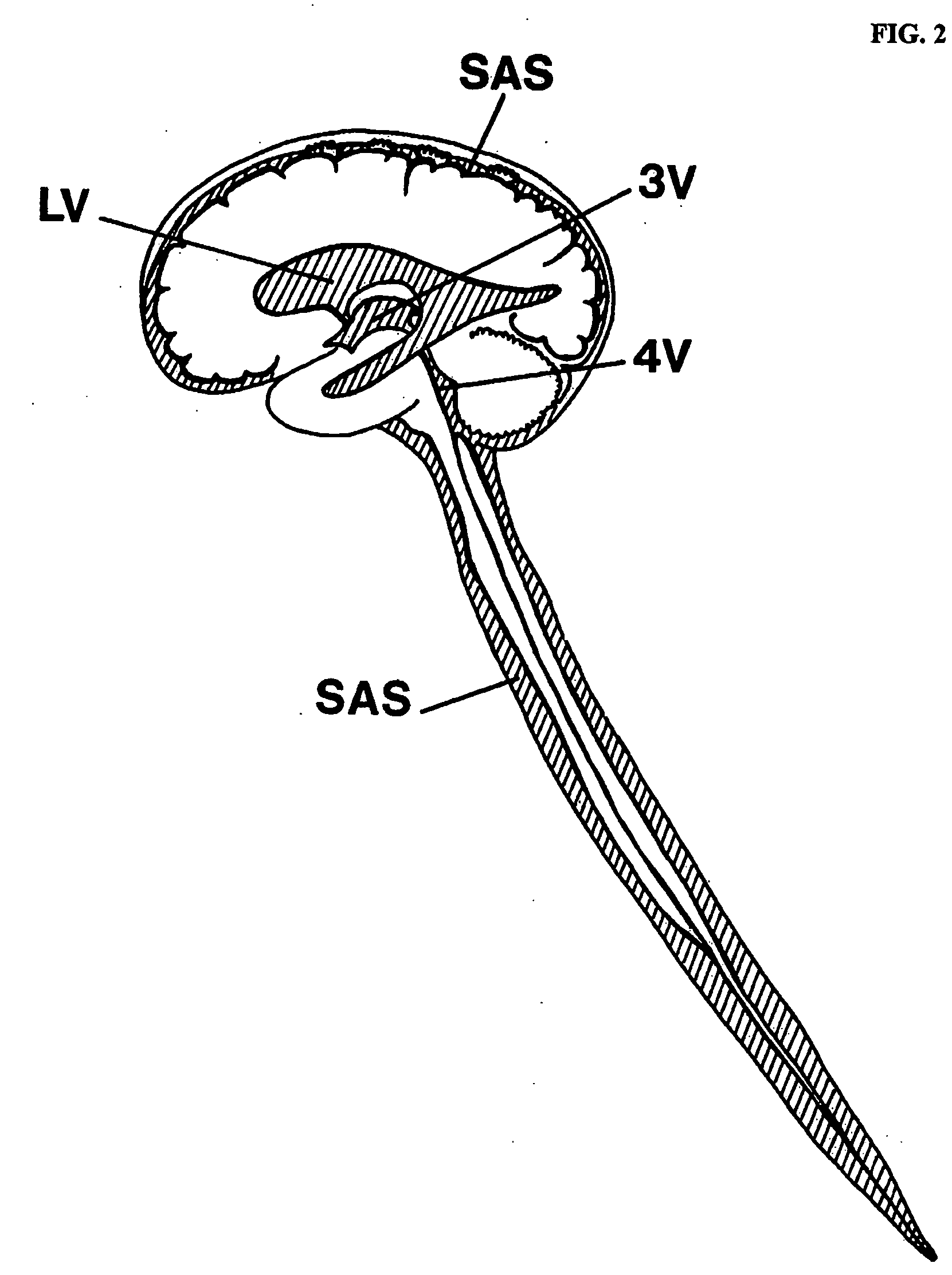Systems and methods for CSF drainage
a system and drainage technology, applied in wound drains, intravenous devices, medical science, etc., can solve the problems of shunt overflow, unable to recognize the importance of adequate csf volume in cerebral ventricles and subarachnoid, and previous technology fails to recognize the importance of adequate csf volume. , to achieve the effect of rapid, reliable and remote access to the venous system
- Summary
- Abstract
- Description
- Claims
- Application Information
AI Technical Summary
Benefits of technology
Problems solved by technology
Method used
Image
Examples
Embodiment Construction
[0025] In one embodiment, intra-osseous infusion device 3 of FIG. 4 simply replaces the distal shunt of the prior art, with all other elements remaining unchanged. Thus, the one-way valve leading from the ventricular catheter opens in response to a pressure gradient, and CSF is directed through the intra-osseous infusion device into the skull and thence to the venous system of the brain rather than to other distal sites in the body.
[0026] This embodiment eliminates the uncontrolled siphoning and overdrainage common to the prior art, but excess CSF extraction remains dependent on pressure gradients rather than on the more physiologically relevant parameter of CSF volume.
[0027] Several embodiments of intra-osseous infusion device 3 are envisioned. A generic design is shown in FIGS. 4-7, and detailed schematics of specific embodiments are provided in FIGS. 8-11. The common attributes are: (1) inlet port(s) to receive CSF from a valve or a pump / valve device, (2) communicating structur...
PUM
 Login to View More
Login to View More Abstract
Description
Claims
Application Information
 Login to View More
Login to View More - R&D
- Intellectual Property
- Life Sciences
- Materials
- Tech Scout
- Unparalleled Data Quality
- Higher Quality Content
- 60% Fewer Hallucinations
Browse by: Latest US Patents, China's latest patents, Technical Efficacy Thesaurus, Application Domain, Technology Topic, Popular Technical Reports.
© 2025 PatSnap. All rights reserved.Legal|Privacy policy|Modern Slavery Act Transparency Statement|Sitemap|About US| Contact US: help@patsnap.com



